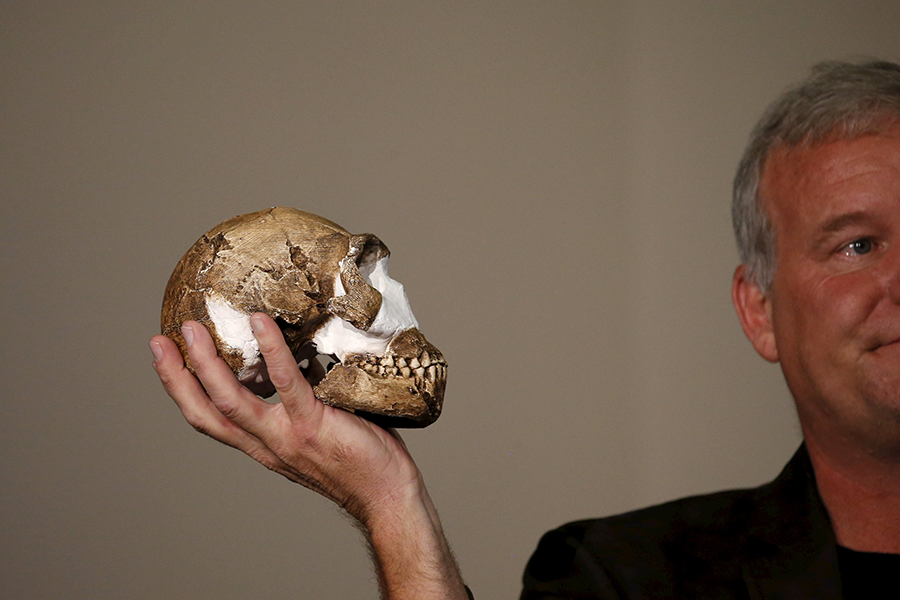New human ancestor discovered in South African graveyard
Loading...
Squeezing through a 7-1/2 inch wide crack and descending more than 400 feet, agile explorers were able to reach a chamber of fossilized bones of a new creature – a distant human relative.
In 2013, archaeologists working in a South African cave called Rising Star, located in the Cradle of Humankind world heritage site where the human species emerged, collected about 1,550 bones, which made for the largest discovery in Africa. They came from 15 individuals who seemed to have been deliberately placed in the chamber after their death, perhaps in a burial ritual.
"It’s enormously surprising to see a very primitive member of the genus, not very humanlike overall, to do something unique to humans," said Lee Berger, who studies human evolution at the University of the Witwatersrand in Johannesburg, to The Washington Post.
After two years of analysis by international experts, members of the expedition announced Thursday that the bones belong to a new species called Homo naledi, age still undetermined.
H. naledi were thin and below five feet tall, paleoanthropologist John Hawks told NPR, and very human-like overall – with one key exception.
"They have a very small brain. They are not human-like at all in their brain," said Professor Hawks, who teaches at the University of Wisconsin-Madison. "It's around a third the size of a human brain today."
The bones were first discovered in 2013, when local cavers found a jaw and skull sitting in the dirt inside Rising Star and brought photos to Dr. Berger.
"I saw something I perhaps thought I'd never see in my life," Berger told NPR. "Clearly primitive hominin remains lying on the floor of a cave."
He launched an expedition into the cave, which required a deep and treacherous descent. Berger recruited six female scientists, all slender enough to fit through the narrow and jagged tunnel leading to the chamber of bones.
“I saw an ad on Facebook,” American University PhD candidate Becca Peixotto told The Washington Post, and immediately signed on to assist.
After examining the cache of bones of 15 different men and women – from newborns to elders – scientists concluded that the H. naledi had both modern and primitive features.
In addition to a brain the size of a baseball, they had primitive shoulders and torsos, with hands similar to ours but with curved fingers useful for climbing and swinging from trees.
The H. naledi wrist bones indicate that they used tools, and their long legs and feet, nearly identical to ours, allowed them to walk upright for many miles at a time.
This discovery comes on the heels of another major archaeological breakthrough this week in England, where scientists found a huge ritual monument near Stonehenge, which they say could radically change our understanding of the prehistoric monument.
The team in South Africa plans to continue exploring Rising Cave, the researchers say, to continue piecing together the wealth of clues left there.
"This is an anatomical mosaic that evolutionary history gave us," Hawks said.





